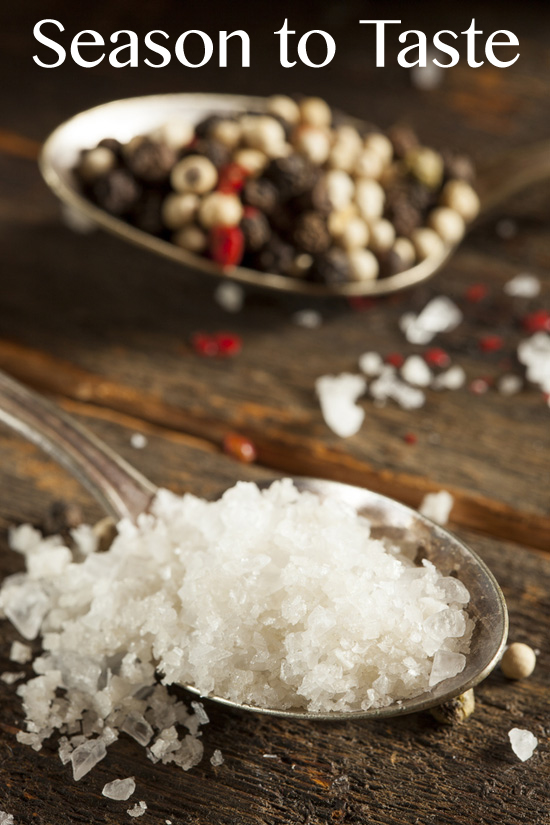
When we cooks encounter the phrase, “season to taste” the natural inclination is to reach for the salt. However, some diets discourage salt and, when handled poorly, salt can be overwhelming. If you can taste the salt you’ve seasoned too heavily. I don’t want to give the impression that I’m anti-salt. Far from it. A well-timed sprinkling of the stuff can be the key to deep flavor. After all, James Beard called salt the “sovereign of seasonings.” When used judiciously salt disappears into the overall flavor of a dish.
Especially during the cooking process. I have no problem with salt as seasoning.
I do have a problem with diners who reach for the saltshaker as soon as they sit down, however. First of all too much sodium is not good for most people. Besides, your meal should arrive at the table well seasoned. Give the cook some credit. Of course, there’s room for disagreement and personal preferences – but please, oh please – taste before you salt. Especially if you’re eating at my house.
That said I thought we should talk about what “season to taste” or really just “season” actually means.
Season to Taste
There are two well-accepted forms of seasoning. Salt is one. But the other is less understood and holds the key to balance in cooking. I am talking about acidity.
To your taste buds adding salt and adding acidity may accomplish the same goal – the food tastes better. But these ingredients accomplish their goals differently.
Salt brings out the potential in food and boosts the qualities that already exist. It makes beef taste beefier, eggs taste eggier, and sweets like caramel and chocolate far more sublime.
But acid acts in another way altogether. Acid adds to the fabric of a dish. It becomes part of its construction. Whereas salt enhances, the acidity builds. If we’re talking houses here – salt would be paint and acidity would be lumber. But this analogy falls short because the structure in cooking can come at any one of many places along the road.
Housing, Roads… I sound like a politician. I hope you can follow along anyway.
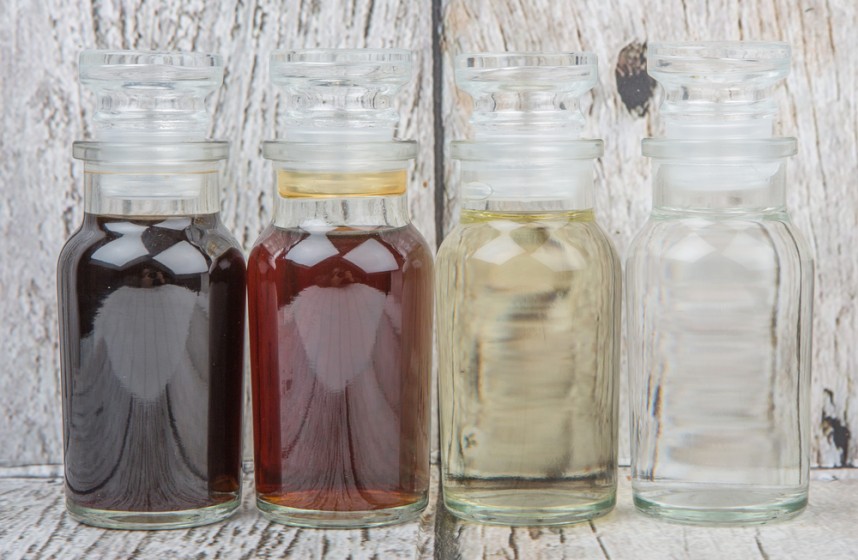
Sometimes the adding of acidity is built right into the recipe in subtle ways. So don’t skimp on or skip them entirely. When a recipe says to de-glaze the pan with wine don’t simply substitute one liquid for another and think that by getting all those yummy bits off the bottom and into the sauce that your mission is accomplished. Sure, de-glazing gets those flavor bits unstuck, but we use wine for other reasons than its fruity flavor. We use it for the acid it brings to the sauce.
There are other useful ways to add acidity to a dish. Each has its own character and each has a place on your permanent shopping list.
Vinegar is one of the best. A teaspoon of vinegar stirred into a cream-based soup at the last minute can be transformative. That’s why vinegar lives right on top of my stovetop, right next to 3 kinds of salt and my “everyday” olive oil. There are so many to choose from. You could start a collection. Though I doubt it would ever rival mine. Unlike some silly over-the-top price tags you can find on olive oil. Really good vinegar can be had at reasonable price points. So splurge. Try all kinds. You deserve it.
Citrus (especially lemon) is another useful cooking acid. Citrus is great at “brightening” almost anything. It can cut through some of those full-mouth-fatty-flavors and adds much-needed balance to cloyingly sweet fruit recipes.
There are other “seasonings” besides salt and acid. They all reach for the same effect in a recipe and you should experiment with them too. Some of these ingredients are regional or unique to one style of cooking. Asian fish sauce or its Italian counterpart, Colatura di Alici are good examples of this.
Sugar can also become a seasoning agent. A pinch of plain old granulated sugar can balance a recipe. Especially acidic recipes. A sprinkling of sugar in tomato sauce is the perfect example.
So experiment. If you’re afraid of ruining your beautiful soup with the wrong seasoning, then pull small amounts out at a time and add just a hint of whatever seasoning strikes your fancy. Your soup pot will stay pristine – waiting for that moment when the right seasoning makes itself known to your palate. This is when everything comes together, and you experience that wonderful moment of taste. Ah, taste! GREG
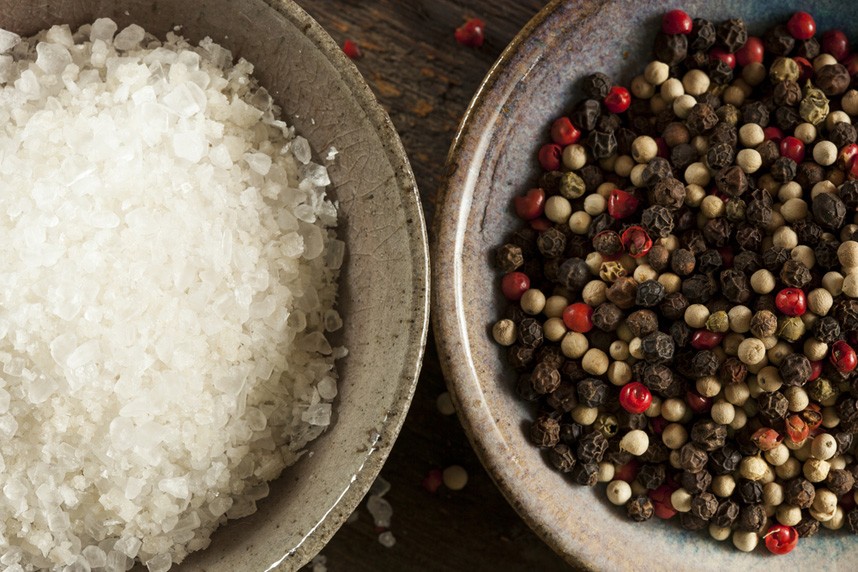
Images by Brent Hofacker and Mahathir Mohd Yasin. Courtesy of my editorial partnership with Shutterstock.
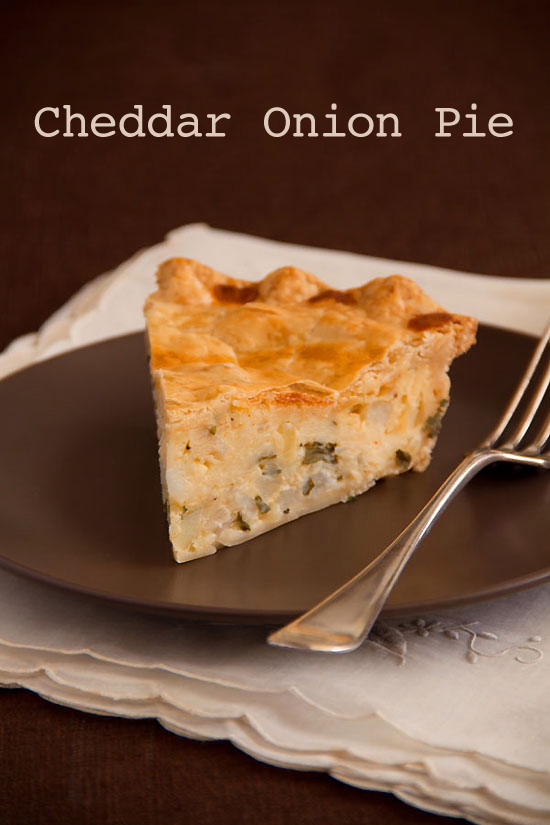

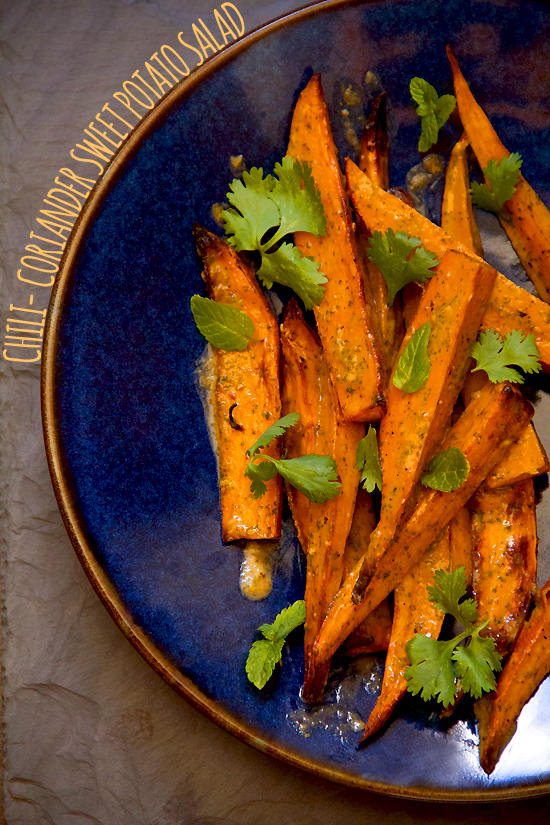
My grandfather would always take a new potential employee out to lunch before he would hire them. If they salted their food before they tasted it, he would not hire them.
Such a fantastic post thanks for sharing
Greg, this is great post! I can’t tell you how many times we stand around after trying a new recipe or method and keep saying out loud to ourselves “it just needs a little something more!” Seasoning is a learning curve, most definitely!
Greg, as John/KR said, this is one of those posts that I’ve always been meaning to write! You have said it soooo well. I hate it when people add salt (and pepper) before even tasting, so in order to spare myself that experience in my own home, I don’t even put salt and pepper on the table. I wait until guests have started eating, then say something like “If anyone would like some salt or pepper, I have it right here.” And then I bring out my little two-sided salt cellar with tiny salt spoon.
What a fabulous post Greg, thank you! My Dad used to pull out the salt and sprinkle before tasting, until my Mom taught him a lesson and she over seasoned a dish. He proceeded to salt before tasting and before he knew it, it was over salted! He never did that again. I’ve never been heavy handed salting but I do season, particularly when it’s just the two of us, I like to liven up a dish with lemon juice instead of salt. JT discovered that adding a pinch of baking soda to his chicken cacciatore will sweeten the dish as if you had added sugar (it actually reduces the acidity making it seem sweeter, but it isn’t). And a pinch is all you need because it foams up like a rabid dog (stir in well). My BFF loves to salt her beef, she actually pours a little mountain of salt on her plate and dips the beef into it (it almosts makes me gag to watch). I too, have a fabulous vinegar and oil collection, one of my favourites is an aged balsamic made from a 50 year old and an 80 year old balsamic and my other favourite is the Greek olive oil our neighbours father has pressed every year from their olive grove in Greece!
Thanks for this great post, Greg! My parents always kept a cast or set at the table, which included vinegar, as well as salt, sugar, and pepper. I am fascinated by your addition of a spoonful of vinegar to a cream soup… I will definitely try this.
It is truly amazing to taste a soup before and after adding some acidity! (I shudder–cringe with a teensy bit of rage–when my husband reaches for the Valentina hot sauce before tasting.)
great post Thanks
Such a fantastic post, Greg. So many different seasonings one can add “to taste.” 🙂
Thank you, thank you, Greg. Since hubs is on a restricted sodium diet, I don’t add any salt while cooking, instead I rely on wine, citrus, and vinegar to brighten flavors, and add salt at the table.
Great post, Greg! Now have fun in florida!
I always learn something on your site, Greg. So informative. And I agree about lemons — definitely adds a brightness to dishes (especially soup). I’m lucky to have a lemon tree in the yard that has lemons pretty much year round. Now if I could just get a meyer lemon tree to grown in a pot — I tried last year but no luck.
This is a great post , Greg. Thanks!
I’m curious about your three salts. I’m going to go out on a limb and say that table salt isn’t among them. I’m going to guess, kosher, flur de sel … but I’m stuck on the third. Celtic salt?
Kosher. Maldon. Grey Fleur de Sel. GREG
I used to know a guy who always conducted his job interviews at a restaurant. If the potential candidate salted his or her food before tasting it, they didn’t get hired!
I love those antique glass jars. My mom gave me a few.
You’re right about salt. I can’t remember what I was eating, but I surprised myself b/c there wasn’t anything salty in it and I didn’t mind one bit!
Great insights you’ve got, Greg. I’ve kind of taken the phrase “season to taste” for granted and have not realized until now that there’s a science behind it. So thanks for this new learning.
This is one of those posts that I’ve always been meaning to write, but have never gotten around to. Thanks for saving me the trouble! It’s the acid part that’s so key — often when people think they need salt, they just need a shot of something acidic. Good stuff — thanks.